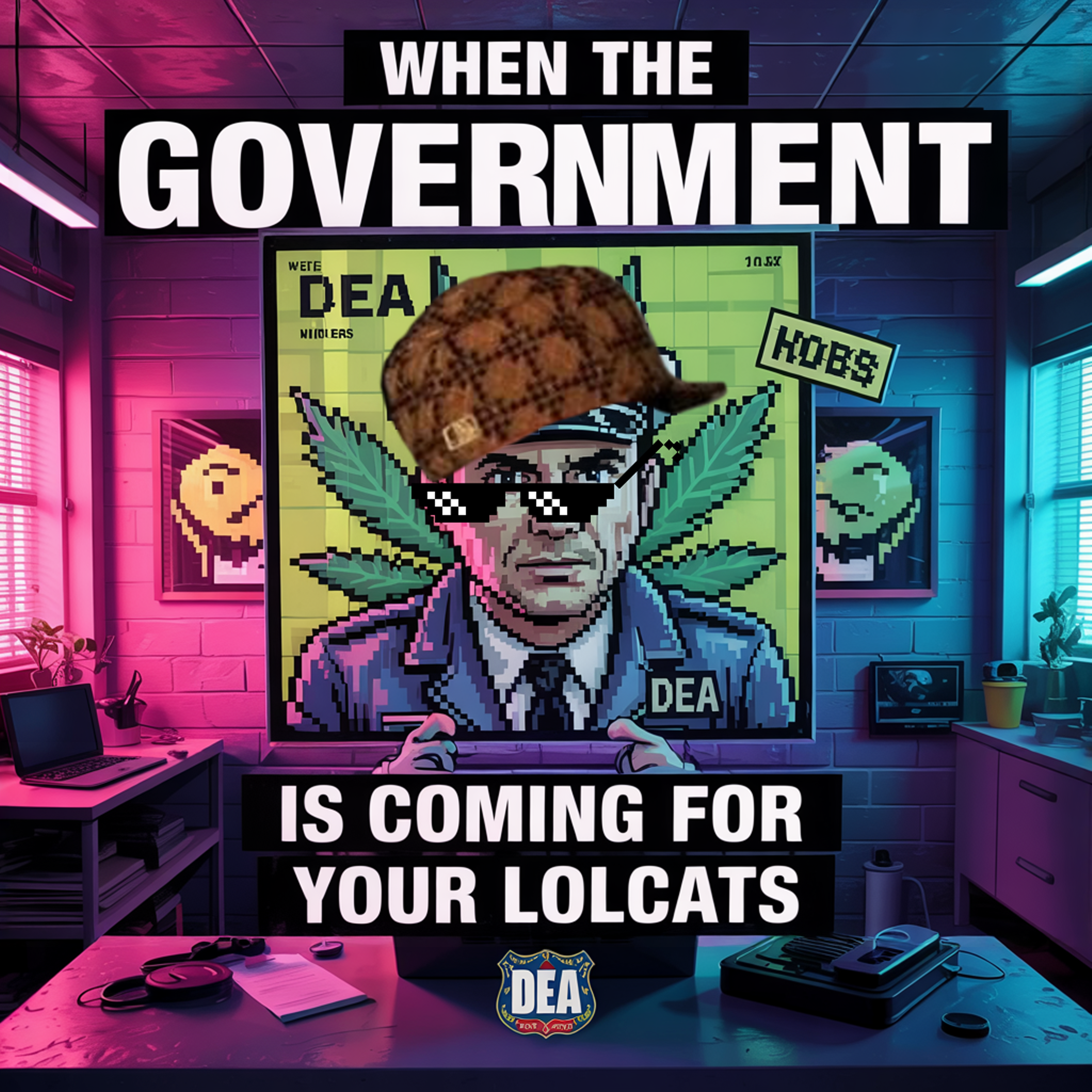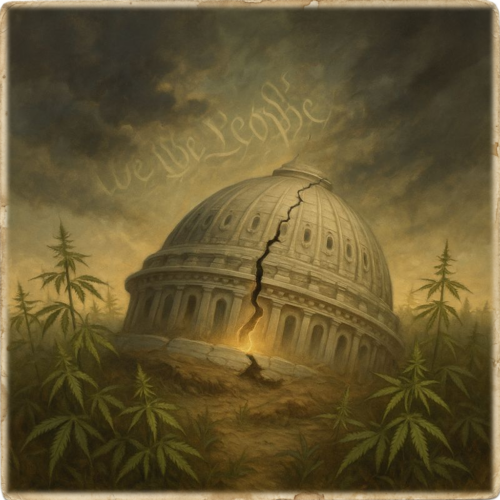Just Say Know? The DEA Meme Campaign and the Politics of Cannabis Prevention.
During National Prevention Week 2025, the Drug Enforcement Administration launched a cannabis prevention campaign that’s difficult to take seriously and harder still to ignore.
Branded as “Just Say Know”—a nod to the Reagan-era slogan with a veneer of enlightenment—the initiative trades in memes, dramatized health claims, and digital nostalgia in an attempt to reach youth audiences on their own terms. Or at least what the DEA thinks those terms are.
The campaign, developed in partnership with Johnny’s Ambassadors, has spread across federal platforms like JustThinkTwice.gov and GetSmartAboutDrugs.gov. While the DEA frames it as an educational effort, critics argue it’s a throwback to scare tactics dressed in digital drag.
The Players and the Pitch
The DEA’s Community Outreach Section lists prevention among its seven strategic priorities, wedging public education into the same framework as law enforcement and border control. Historically, the agency’s drug messaging has leaned heavily on deterrence through fear—think D.A.R.E., not dialogue.
But this time, the DEA enlisted outside help.
Enter Johnny’s Ambassadors, a parent-led group founded in the wake of personal tragedy. The organization attributes a teen suicide to high-potency cannabis and has since focused on spreading cautionary messaging around youth cannabis use.
Their materials—quizzes, infographics, and social media assets—augment the DEA’s content with an emotional pitch meant to personalize the perceived risks. The collaboration allows the DEA to amplify emotionally charged messaging while keeping one degree of separation from its most controversial claims.
Memes and Messages: Repackaging Fear
The “Just Say Know” campaign is built around visual shareables designed to move quickly on social media. The official copy even encourages reposting during National Prevention Week, urging users to “share these cannabis prevention graphics.”
Among the more attention-grabbing visuals are memes asserting that cannabis causes a 50% drop in sperm count, is four times as potent as the weed from 30 years ago, and serves as a gateway to opioid use. One meme compares a single dab to “50 Woodstock joints,” a historical reference designed to shock boomers and Gen Z alike.
These claims are not only contested—they’re often context-free.
The sperm count figure, for instance, stems from a limited set of observational studies. One 2019 study in Scientific Reports noted potential decreases in sperm concentration among frequent cannabis users, yet a contrasting study in Human Reproduction found that men who had used cannabis at some point actually had higher average sperm counts than those who had never used it.
Meanwhile, a 2019 study published in JAMA Psychiatry found that cannabis use disorder is frequently comorbid with mood disorders, particularly among youth, and that it may elevate risks for self-harm and mortality.
However, comorbidity complicates the narrative: is cannabis causing the crisis, or is it co-occurring with it? That’s not just a semantic question—it’s the line between science and scapegoating.
Which is it? That depends on the narrative you’re selling—and the cherry orchard you’re picking from.
Mental health claims follow a similar trajectory. Some studies have indicated a potential correlation between heavy cannabis use and psychosis, especially in those with a genetic predisposition. However, the National Academies of Sciences concluded in 2017 that evidence linking cannabis to depression or suicide was only moderate, and again, causality remains unproven.
The leap from “there may be an association” to “cannabis causes suicide” is propaganda at its most polished.
Then there’s the trusty gateway drug myth—the claim that cannabis paves the road to opioid addiction. That theory has been debunked more times than it’s been cited. The RAND Drug Policy Research Center attributes any progression from cannabis to harder drugs not to the substance itself, but to shared risk factors like trauma, environment, and socioeconomic conditions.
Once again, correlation is not causation—a distinction DEA messaging continues to bulldoze in the name of deterrence.
As for the “50 joints = 1 dab” line, it’s the sort of claim designed for shock value, not accuracy. Yes, dabs contain higher THC concentrations. No, that doesn’t mean a user inhales the equivalent of 50 joints’ worth of cannabinoids in a single hit. People titrate, meaning they taper their entry into use, adjusting doses to find a comfortable level. That’s how consumption works. To be sure, there is no indication that anyone is loading even one “joint’s worth” of dabbable concentrate into their rigs. Likewise, no one chugs Everclear like they’d do with a beer, and nobody confuses the two—unless they’re trying to score politial points.
A Crisis of Credibility
Organizations like NORML and the Drug Policy Alliance have long criticized federal drug campaigns for cherry-picking data and downplaying cannabis’ medical applications. Paul Armentano of NORML has pointed out that sensationalized messaging may actually backfire, especially among audiences with firsthand experience that contradicts the scare stories.
The trouble isn’t just in the data—it’s in the tone. Today’s youth grew up in a media ecosystem that rewards transparency and calls out hypocrisy. When a campaign leads with disingenuous moral panic instead of verifiable science, it’s treated accordingly: dismissed, memed back, or ignored entirely.
Worse still, federal messaging on cannabis is fundamentally undercut by the federal government itself. With 38 states and several territories having legalized cannabis in some form, the continued Schedule I classification under the Controlled Substances Act increasingly appears arbitrary, if not ideological.
The DEA’s memetic messaging, then, exists in a liminal space—enforced by an agency clinging to prohibition in a country that’s largely moved on.
History Repeats, Now With Wi-Fi
This isn’t the DEA’s first awkward attempt to win hearts and minds. Past campaigns include the Anti-420 Day initiative, which called on students to produce anti-cannabis content, and the “natural highs” campaign, which encouraged youth to substitute drug use with video games, selfies, and pet stores.
The throughline across decades of DEA outreach is its tendency to view drug use as a moral failing rather than a public health issue. Even as formats change—from posters to memes—the logic stays frozen in time.
By ignoring the social, psychological, and economic conditions that drive drug use, these campaigns offer oversimplified narratives with no solutions, only slogans.
A Policy Landscape in Flux
The campaign comes amid growing calls to reclassify cannabis at the federal level. Currently a Schedule I drug—alongside heroin and LSD—cannabis is subject to the most severe restrictions under the CSA, despite growing evidence of its therapeutic use and far lower potential for harm.
Rescheduling to Schedule III has been proposed, which would acknowledge its medical applications and reduce barriers to research. However, that process has been sluggish, delayed by lawsuits, political jockeying, and leadership shakeups at the DEA.
Terrance Cole, a pending nominee to lead the agency, may shift priorities depending on his confirmation. Yet, any change in classification won’t resolve the deeper credibility gap unless the messaging changes too.
The Limits of Meme Logic
From a mass media perspective, memes are an efficient delivery system—but only when the content they carry is perceived as trustworthy. They can clarify, simplify, or satirize. They cannot, however, replace substantive discourse.
By collapsing complex health outcomes into single-frame warnings, the “Just Say Know” campaign overestimates the persuasive power of aesthetics and underestimates its audience’s discernment.
In a media environment where content is constantly fact-checked, duetted, and remixed, credibility isn’t optional—it’s currency. A campaign built on disputed data can’t expect to dominate the narrative, no matter how hard it tries to appear relatable.
Moving Toward Meaningful Prevention
If cannabis prevention among youth is the goal, the strategy needs more than memes. It needs messaging that acknowledges the full landscape—medical benefits, individual variation in use patterns, mental health implications, and yes, the potential for harm—all delivered through frameworks that invite dialogue, not dictate it.
A more effective approach would involve:
- Transparent sourcing of claims
- Acknowledgment of both risks and benefits
- Collaboration with independent health institutions, not just enforcement agencies
- Media literacy integration to empower young people to analyze the content they consume
The public is more receptive to prevention messaging when it feels informed, not manipulated. Young people are more likely to engage with messages that respect their intelligence than ones that assume ignorance.
Less Panic, More Precision
The DEA’s “Just Say Know” campaign marks an attempt to modernize cannabis prevention by tapping into meme culture, but its execution leaves much to be desired. Dramatized statistics, ideological undertones, and a refusal to engage with evolving cannabis science place the campaign squarely in the realm of rhetorical déjà vu.
In an age of legal dispensaries, medical marijuana patients, and industry regulation, fear-based messaging reads like historical fiction. To rebuild public trust, federal messaging on cannabis must evolve from alarmism to accuracy—and from propaganda to public service.

Trap Culture is the ultimate destination for cannabis enthusiasts who want to experience the best of Arizona’s cannabis culture. Whether you are looking for the hottest cannabis-friendly events, the latest news on cannabis legalization, trends in the industry and exclusive, limited-edition products from the top brands in the market, Trap Culture has you covered. Visit our website to learn more about our events, our blog, and our store. Follow us on social media to stay updated on the latest news and promotions. Join the Trap Culture family and experience the most immersive and engaging social cannabis events in Arizona.
Follow us on social media




